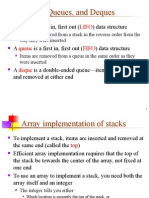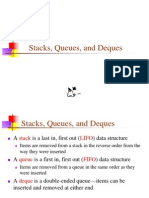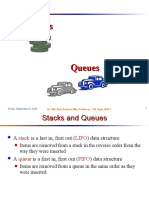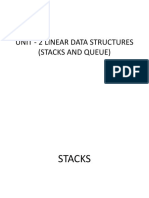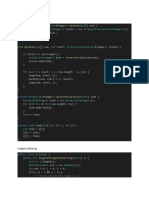0% found this document useful (0 votes)
18 views32 pagesData Structure Lesson 2 Stackn Queuecmp313
The document provides an overview of data structures, specifically focusing on stacks and queues. It explains the concepts of FIFO (First In, First Out) for queues and LIFO (Last In, First Out) for stacks, along with their implementations using arrays and linked lists. Additionally, it discusses operations, error handling, and practical applications of these data structures.
Uploaded by
08163844636nCopyright
© © All Rights Reserved
We take content rights seriously. If you suspect this is your content, claim it here.
Available Formats
Download as PDF, TXT or read online on Scribd
0% found this document useful (0 votes)
18 views32 pagesData Structure Lesson 2 Stackn Queuecmp313
The document provides an overview of data structures, specifically focusing on stacks and queues. It explains the concepts of FIFO (First In, First Out) for queues and LIFO (Last In, First Out) for stacks, along with their implementations using arrays and linked lists. Additionally, it discusses operations, error handling, and practical applications of these data structures.
Uploaded by
08163844636nCopyright
© © All Rights Reserved
We take content rights seriously. If you suspect this is your content, claim it here.
Available Formats
Download as PDF, TXT or read online on Scribd
/ 32
